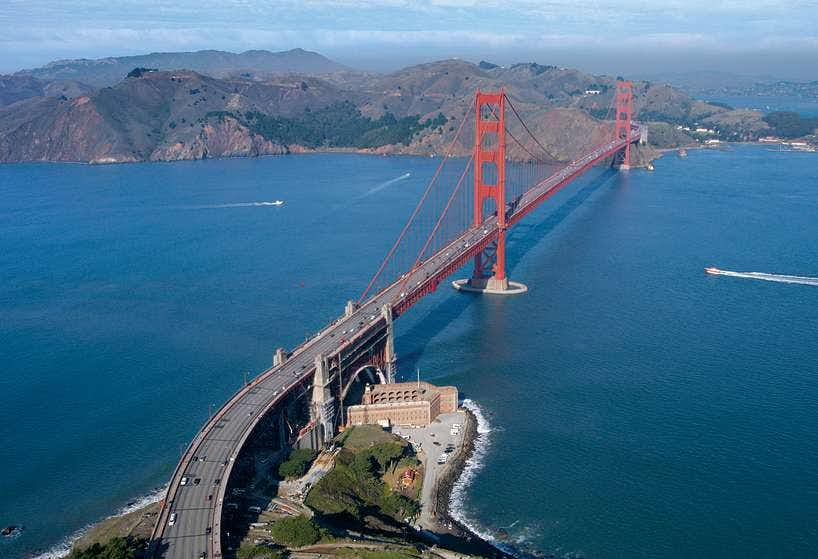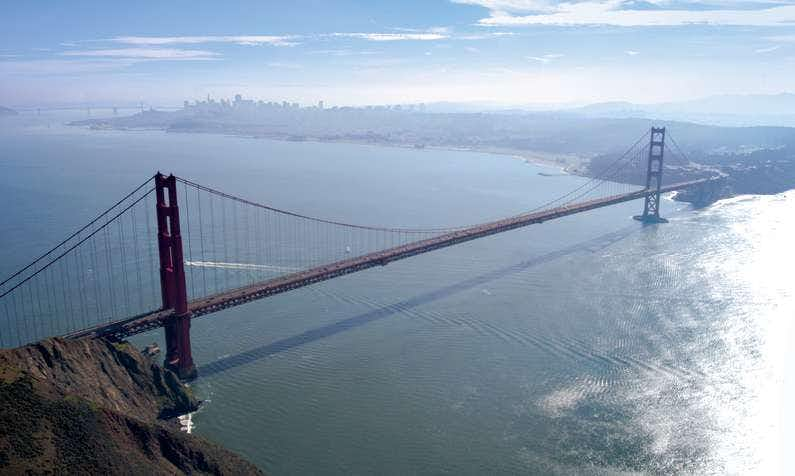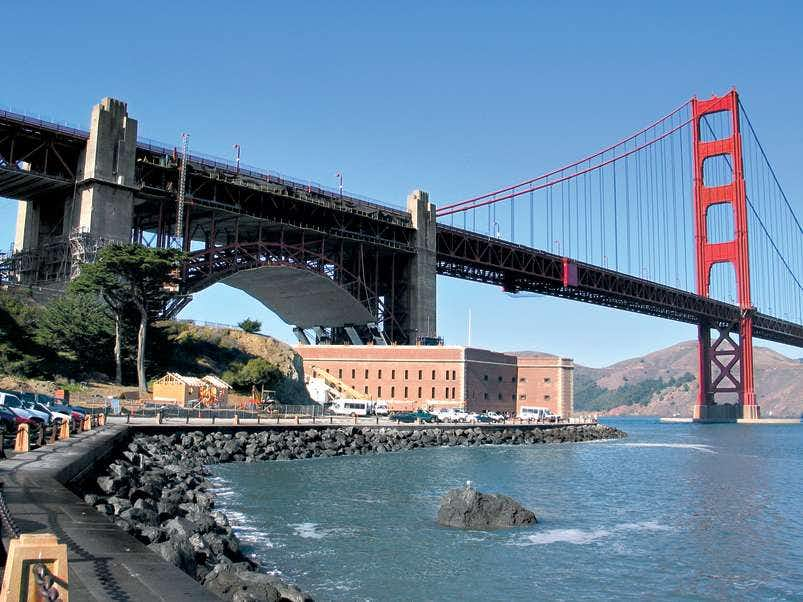Seismic Retrofit using Geotechnical and Post-Tensioning Systems
The Golden Bridge in San Fransisco is located on a very active seismic area. Engineering studies determined that an earthquake of magnitude 7 or greater on the Richter scale, with an epicenter near the bridge could cause serious damage unless the bridge is subject to an extensive seismic retrofit scheme.
Context
The Golden Gate Bridge is worldwide renowned and recognized as one of the Seven Civil Engineering Wonders of the United States by the American Society of Civil Engineers.
Since 1937 the bridge has served as a vital link in California's highway system, it crossed by approximately 40 million vehicles every year. At the same time the Golden Gate Bridge with over nine million visitors each year is a landmark of the City of San Francisco. It is why, the Highway and Transportation District (District) - the public agency that operates the Bridge - undertook a comprehensive vulnerability study of the bridge. The engineers determined that the north and south approaches as well as the main span would experience significant damage during a major vent. Retrofitting the Golden Gate Bridge to withstand possible earthquakes of magnitude 8.3 was therefore imperative.
Earthquake threats result from the friction of the North American continental plate with the Pacific oceanic plate. The American plate on which San Francisco is built drifts south, whereas the Pacific plate on which Los Angeles is built drifts north. Moreover, the most active volcanoes on earth called "Ring of Fire" are located around the Pacific plate.
Scope
Planning and construction were done in three phases:
North Approach Viaduct:vulnerable to earthquake due to higher support towers that could collapse first.
South Approach Viaduct,Fort Point Arch. This phase also included work at the South Anchorage Housing,Pylons S1 and S2.
Suspension Bridge,North Anchorage Housing and North Pylon.The planned retrofit concerns work at the trusses supporting the 1,280 m long main span and two 343 m long side spans.Additional retrofit work will take place at the top and bottom connections of the two 227 m tall main towers.
The entire retrofit project preserves the architectural beauty of the bridge.
Solution
Phase 2 was awarded to Shimmick Construction Company / Obayashi Corporation JV of San Francisco, California, which began construction in spring 2001 and is scheduled for completion in 2005.
DYWIDAG supplied and installed DYWIDAG multistrand post-tensioning tendons and also supplied epoxy coated multistrand tiedown anchors. These two main items, are essential part of the design scheme and where installed to strengthen foundations and allow slight upward movement during a seismic event. Their installation was completed in August 2004.
The vulnerability study showed that the Fort Point Arch, which spans a Civil War era landmark building, would be subject to uplift during a major earthquake.
The arch bearings will be modified such that any possible arch lifting will be guided in a controlled manner. A battery of energy-absorbing devices was installed in order to reduce possible movements between the pylons and the arch.
Pylons S1 and S2 located at either end of the arch are made of lightly reinforced concrete. They are about 76m in height and need extensive retrofitting. Thick steel plates embracing the concrete walls of pylons S1 and S2 will be covered with cast-in-place reinforced concrete that preserves the aesthetics of the original construction.
The foundation of pylon S1 was enlarged to 16m x 42m x 7m and 90 of 37-Ø15.2 mm DYWIDAG Multistrand Tendons were placed in both directions on two levels of the foundation. The placing, stressing and grouting of the pre-assembled DYWIDAG Multistrand Tendons with bonded fixed ends took place without any problems. Additional, 32 tiedown anchors of 45-Ø 15.2 mm epoxy coated multistrand were also installed. The pylon S2 foundation was also reinforced with 24 tiedown anchors of 45 -Ø 15.2 mm epoxy coated strand and several passive Ø32 mm DYWIDAG THREADBAR® Tendons grade 835/1030.
The South Anchorage Housing was also inadequately reinforced. The upper section of towers 2 and 3 has been tied vertically and horizontally with high strength DYWIDAG THREADBAR® Tendons grade 835/1030.
Shear walls were placed between the bents.Their foundations were filled with concrete and tied down with DYWIDAG Multistrand Anchors consisting of 7-19 Ø15.2 mm epoxy coated strands.
The south abutment and the foundations of bents S6 through S10 were reinforced with concrete and 36 mm DYWIDAG THREADBAR® Tendons placed in both directions.






